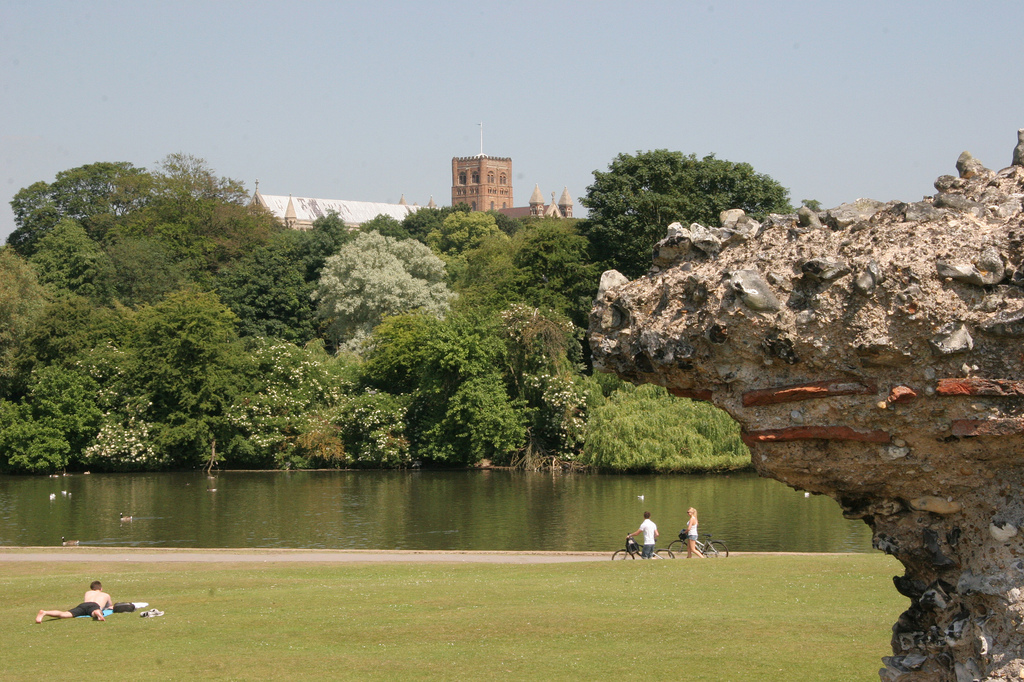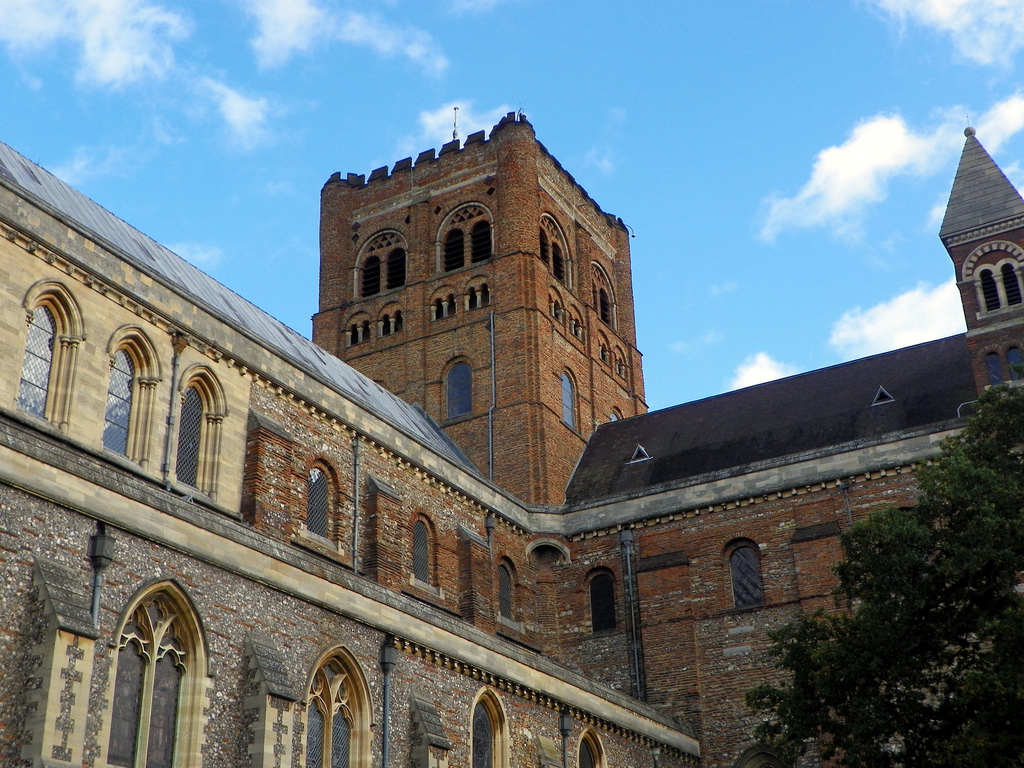“There’s an ancient Roman city just 20 minutes outside of London?”
Although Britain is well known for its vast history, many people are surprised to learn that over 2,000 years worth of the island’s past can be found just a short train ride north of London in St Albans.

Roman wall in Verulamium Park. (Photo: slocumjospeh via Flickr)
A lively market town that skilfully offers modern attractions in a Roman setting, complete with a good dose of medieval architecture, this fair-sized city doesn’t need to work hard to impress its guests.
Over 2,000 years of history on display
St Albans, which once answered to the name Verulamium, has undeniably been dealt a winning hand in historical terms.
The Roman ruins contained within Verulamium Park are one of the city’s highlights. Take a stroll through this expansive green space and you’ll stumble across remnants of the ancient Roman wall, the foundations of a Roman villa and a Roman theatre. The ruins are well preserved and one of the best ways to witness the remains of Roman life…without visiting Rome.
A short walk from the city centre lies the cavernous St Albans Cathedral. Once an Abbey, and spectacular enough to rival Westminster Abbey in London, the cathedral is most notable as the place of the first Christian martyrdom. Saint Alban, was beheaded around 300 A.D. on account of his religion, and his shrine still rests within the cathedral.
Outside, look closely and you will see that the cathedral is a fascinating swatch of centuries of architectural enhancements. Ranging from Roman times, don’t forget to gaze up at the cathedral tower, which was build from the city’s Roman ruins.

St Albans Cathedral. (Photo: Peter aka anemoneprojectors via Flickr)
Beyond Verulamium Park and the cathedral, the best place to delve deeper into St Albans’ past is at the city’s two museums. In chronological order, the Verulamium Museum will help you recreate a vision of Roman life and times complete with genuine Roman artefacts while the Museum of St Albans progresses the story by continuing the historical journey of the city from Roman times through to the present day.
Two other structures of impressive significance in the city include the 15th century Clock Tower and the old Town Hall. The Clock Tower’s most striking feature is its Medieval Belfy, which is the only one surviving in England. Brave the near 100 stairs to the top and you’ll be rewarded with incredible panoramas over this once Roman city. Nearby, located in the very heart of St Albans, the Town Hall occupies an impressive Grade II listed building. Inside you can see the old court and stop by the city’s Tourist Information Centre in the same visit.
Yet, of all these sites of historical significance, perhaps the most engaging part of any visit to St Albans is the bustle that exists outside the Town Hall each Wednesday and Saturday when the market comes to town.
Since trading first began in the 9th century, St Albans’ Charter Market has represented the lifeblood of the city and although bartering as a method of trading may be long gone, the market’s vibrancy holds strong. With over 150 stalls, the market is one of the largest in England and is a real treat if you’re interested in handcrafted goods or traditional, produce or freshly baked foods.

St. Albans Market. (Photo: R. Hamman via Flickr)
Where old blends comfortably with new
St Albans is a highly adaptable city where history is respected yet progress is pursued with passion, and it doesn’t take much time in the city to see that 21st century Britain sits comfortably with its historic counterparts.
Skirting the edges of the century old market, modern shops cater to all requirements from established high-street brands to independent boutiques. There is even a decadent not-for-profit gift shop, Raindrops on Roses, established by an altruistic association of locals focused on providing 100% of the shop’s profits to the charity Herts Against Cancer.
Gastronomes are well catered for too, as restaurants, cafés and bars seem to occupy every inch of available space in this warren-like city.
The Waffle House, on the periphery of the centre is one of the most striking eateries. An old, converted watermill, this all-day sweet and savoury waffle establishment merits queues at the weekend. And for those seeking out a pint of the local ale, it should come as little surprise that St Albans is home to Britain’s oldest pub – the Ye Olde Fighting Cock, from the 11th century.
Completing the modern-day cultural menu and additional proof of the city’s versatility, St Albans also possess an enviable arts scene. If you’re in the market for a work of art, Gallery Rouge will delight with an excellent mix of contemporary fine art from colourist and abstract, to figurative and photorealistic. The gallery opened its doors in 2007 and has subsequently held over 30 dedicated art exhibitions including showcases from internationally acclaimed oil painter Kal Gajoum and Artist of the Year 2012, Kerry Darlington.
Meanwhile, film fans will want to time their trip wisely to coincide their visit with the annual film festival. Running between 1 and 4 May 2014, this year’s festival will use a variety of unique venues to screen more than 100 movies including the cathedral, clock tower, and even the leisure centre, which will be turned into a swim-in cinema for the screening of Jaws. If there were one film festival to experience in Britain, surely it’s the one that takes place in the city where esteemed director Stanley Kubrick lived for more than two decades and produced one of his greatest works, The Shining.
Life moves quickly in St Albans. Trends take hold and the city moves with the times. Yet for every year that passes, a layer is added to the ever deepening history that St Albans holds. It’s a history that is over 2,000 years old. And it’s a history that is still being written, daily.